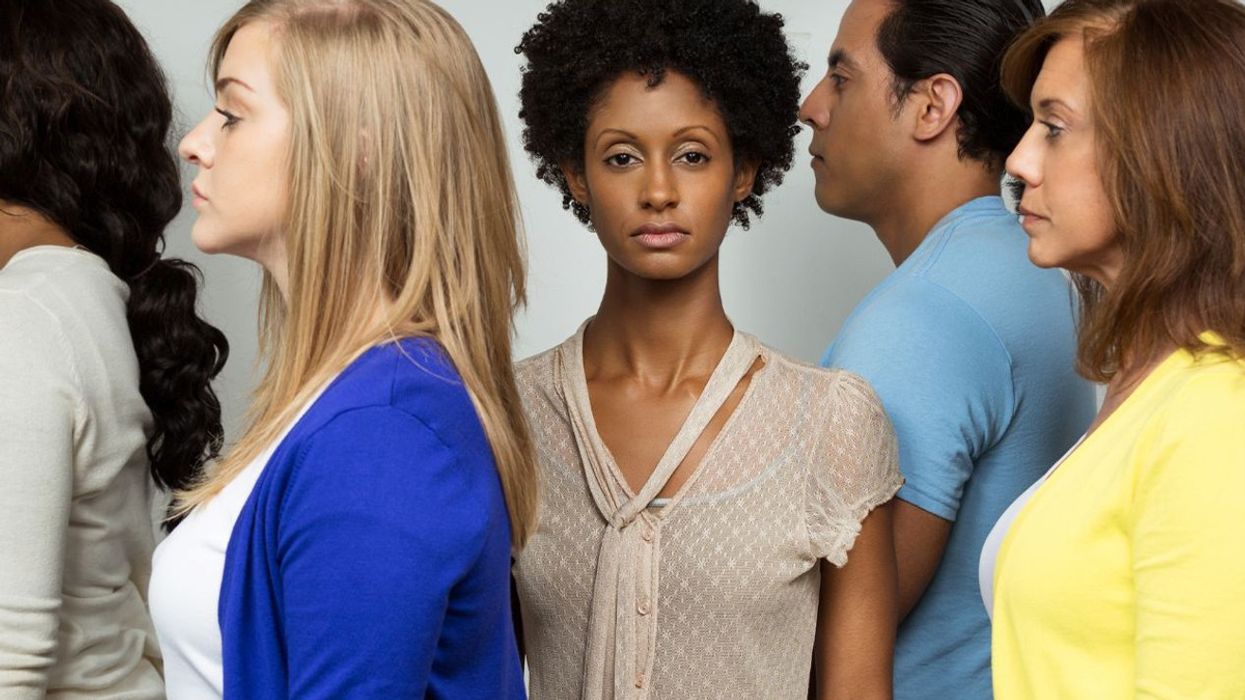Nearly half a million women are married to men in prison. Maintaining these relationships involves a constant struggle with an often unsupportive penal system, despite growing evidence that a healthy marriage is one of the best tools for rehabilitation. Welcome to the intersection of prisons, love and politics.
Every Friday afternoon, after she gets out of nursing school, Carole Santos hits the bank. There, she gets two rolls of quarters and 20 singles, which she divides in two, 10 for Saturday and 10 for Sunday. By 9 p.m., she's nodding off to sleep, but she'll be up before the Lompoc, California, sun to prepare for the big day ahead of her.At 6:30 a.m., she packs her money, driver's license, and a pen into a clear zippered bag and begins her beauty ritual. "During the week, I don't dress up or spend much time with makeup and hairstyle," she says, "but weekends are for my husband, so I always spend that extra time."Carole's husband of four years, a childhood friend, is in the nineteenth year of a 45-year prison term for cocaine distribution, spending the better part of his years writing books about prison. He received his B.A. and M.A. while behind bars. Michael is set for release in 2013, and the couple says they're more in love than ever. Carole has been with him through two sudden transfers, and they agree that the prison in Lompoc, a scenic 10-minute drive from where Carole has moved, is leaps and bounds more peaceful than the other prisons in which Michael has been. From 8:30 a.m. to 3 p.m. on Saturdays and Sundays, they sit at picnic benches shaded by eucalyptus trees, and talk about Carole's progress in school; her daughter, Nichole; their future together; his writing; the singles she has with her are the maximum amount she can bring in when she goes-none of which she can give to Michael-and the quarters afford them snacks from the vending machines, which he is not allowed to touch. "Each visiting day is a blessing," she says, "because we know that at any moment the administration can move Michael, change visiting policies, or make arbitrary decisions that could impact our ability to visit freely."Carole, though eternally upbeat, still grapples with countless external obstacles that make her marriage-and the roughly 450,000 other marriages between prisoners and civilians-a challenge. There is almost no institutional support for these unconventional marriages, though that may soon change. As policymakers begin to reexamine the rehabilitative potential of stable marriages they are also finding that there may be other political and economic benefits to helping preserve these unions. How this plays out on a national scale remains to be seen.As it stands, most facilities are far less idyllic than Lompoc, spouses struggle with the cost of trying to move around as their partners are suddenly transferred, and the financial obstacles of being a single-income family are prohibitive, to say nothing of the psychological toll. In fact, one of the biggest hurdles inmates' wives face is the stigma they say they encounter everywhere they go. It's unknown how many of these marriages are the result of healthy couples who knew each other or dated prior to incarceration, and how many are the result of pathologically low self-esteem or a bad-boy fetish paired with a prison pen-pal service."There will always be people who … define me as one those girls who, you know, goes after someone on death row," says Carole, referring to what some people unkindly call "inmate groupies," a small number of women who seek out relationships with high-profile convicts (Scott Peterson, who received marriage proposals and bagfuls of love letters, comes to mind). "We should stop stereotyping these women-they are not all the same," says the Northeastern University* criminologist Jack Levin, who has written a book about "killer groupies."In a national climate where the promotion of marriage is prioritized and new incarceration initiatives are being introduced across the country, the intersection of prisoners and matrimony appears to be a political blind spot. The wives of inmates are still largely without resources or assistance, grappling with often exorbitant phone rates, long distances to be travelled for visits, hypervigilant visitation rules, and restricted access to information about their husbands' well-being. Right now, according to a report by a leading scholar named Creasie Finney Hairston, "The correctional policies and practices that govern contact between prisoners and their families often impede, rather than support, the maintenance of family ties."| Quote: |
| The wives of inmates are still largely without resources or institutional assistance, grappling with exorbitant phone rates, long distances to be travelled for visits, hypervigilant visitation rules, and restricted access to information about their husbands' well-being. |
| Quote: |
| "I write to her every day and I try to stay on the right track. If I'm in the hole [solitary confinement], I can't call her and she'll worry." |
















 Otis knew before they did.
Otis knew before they did.